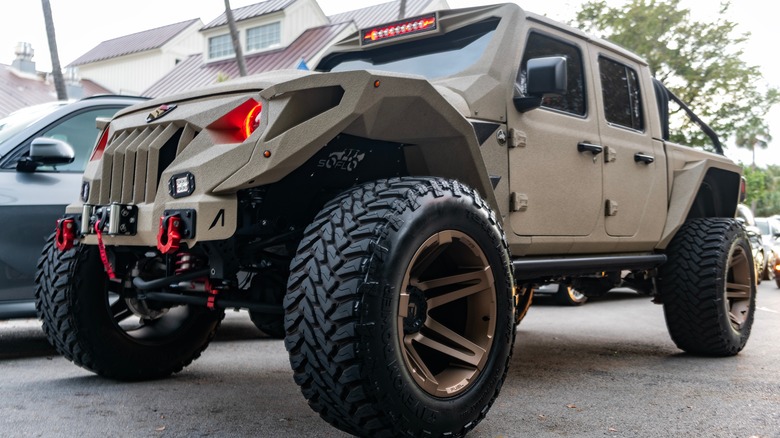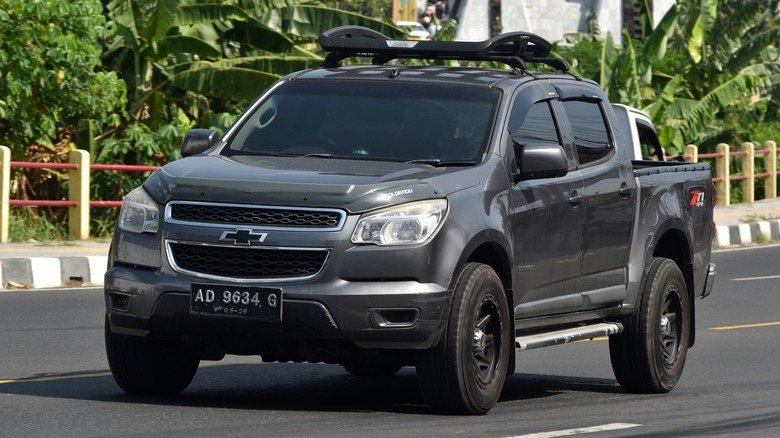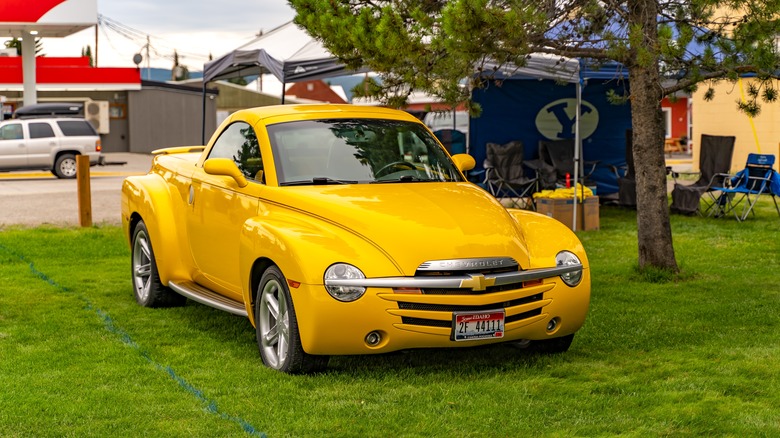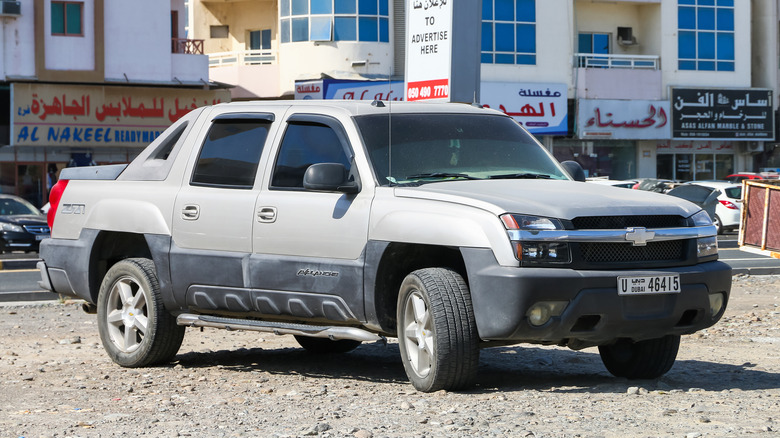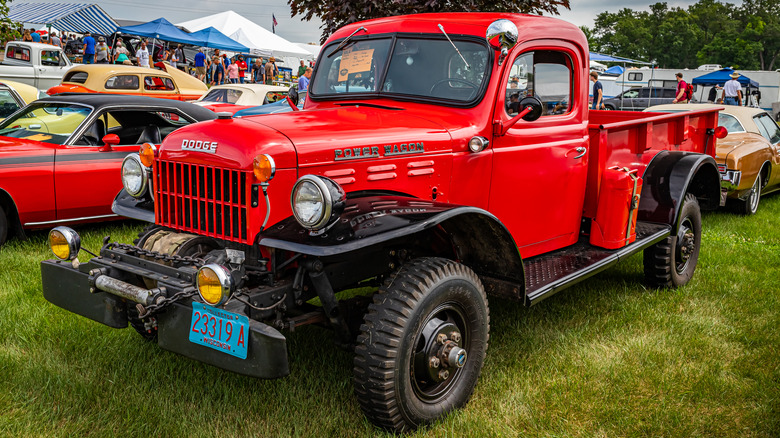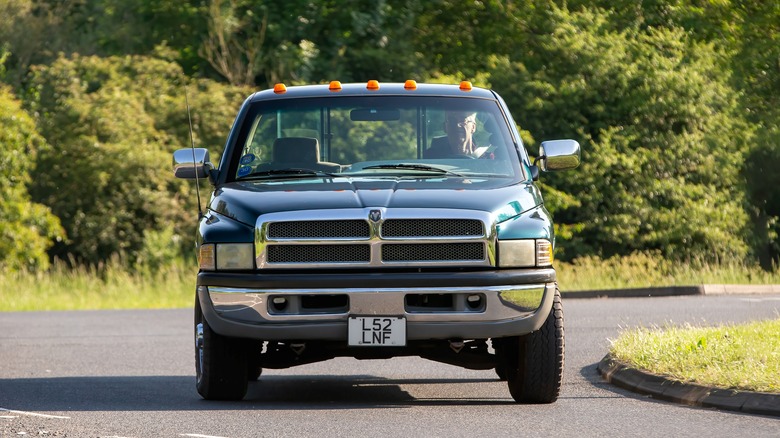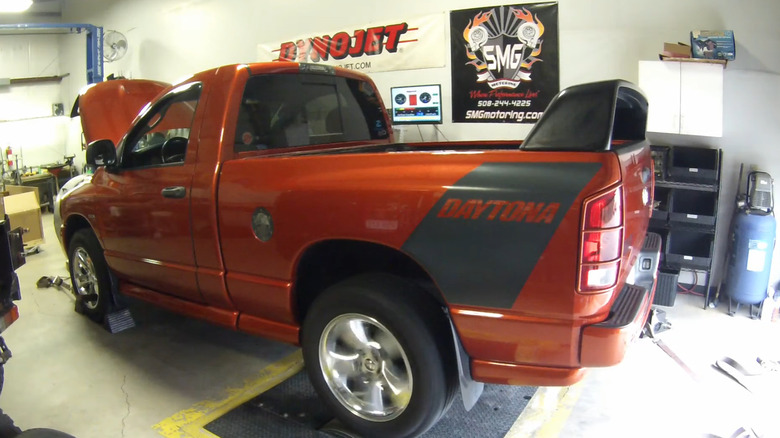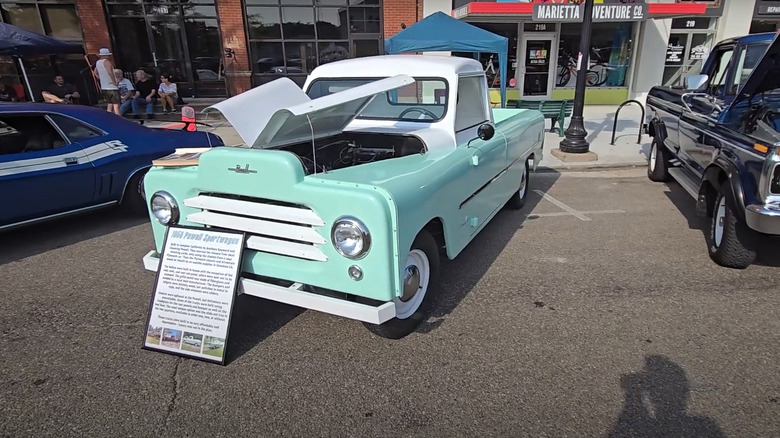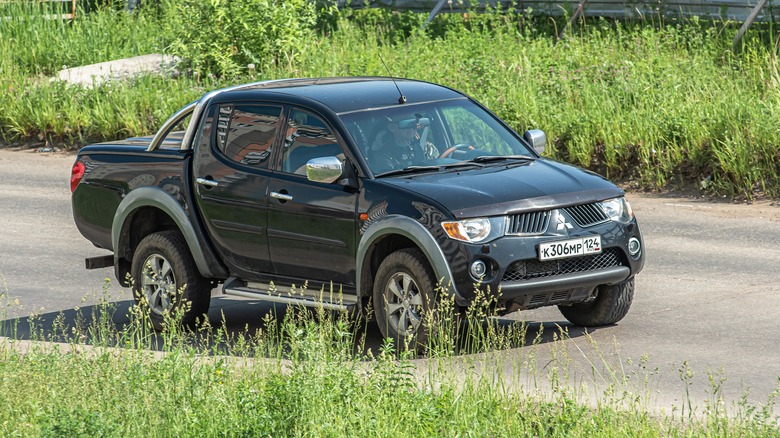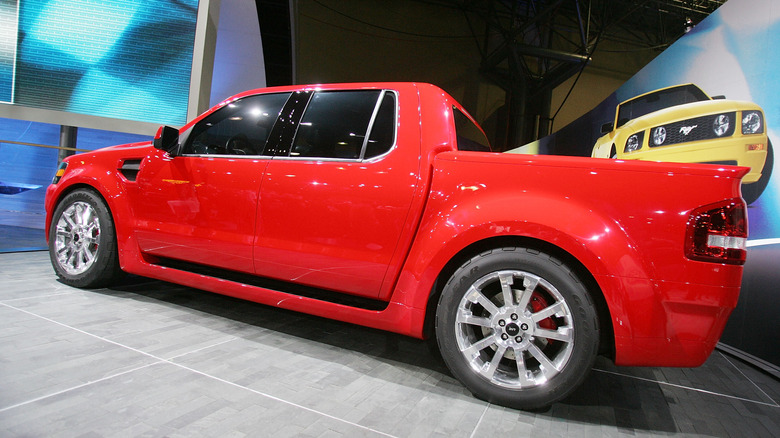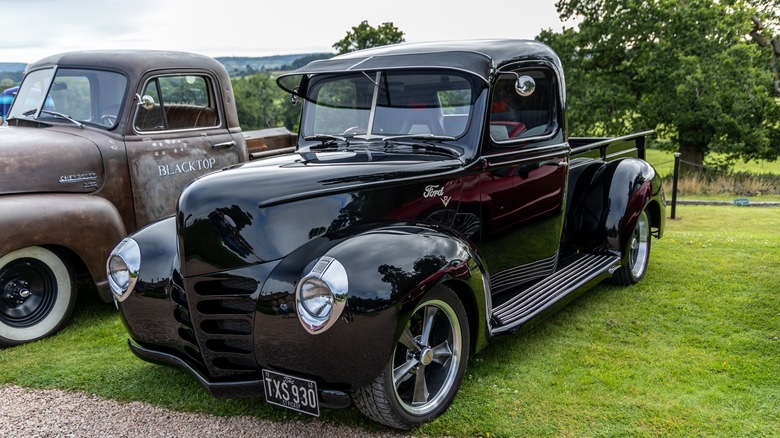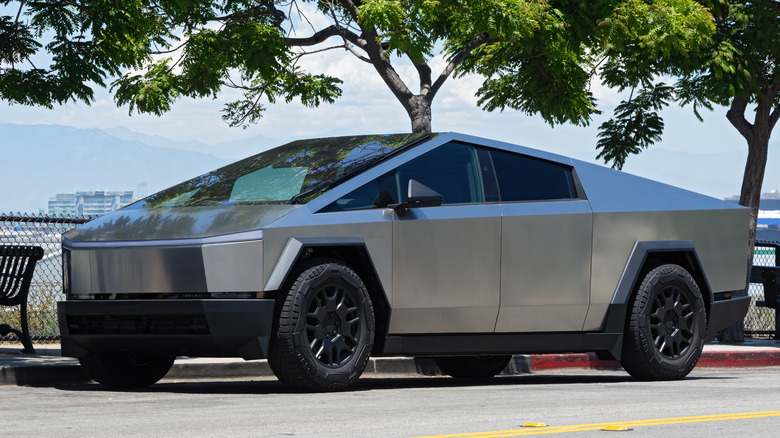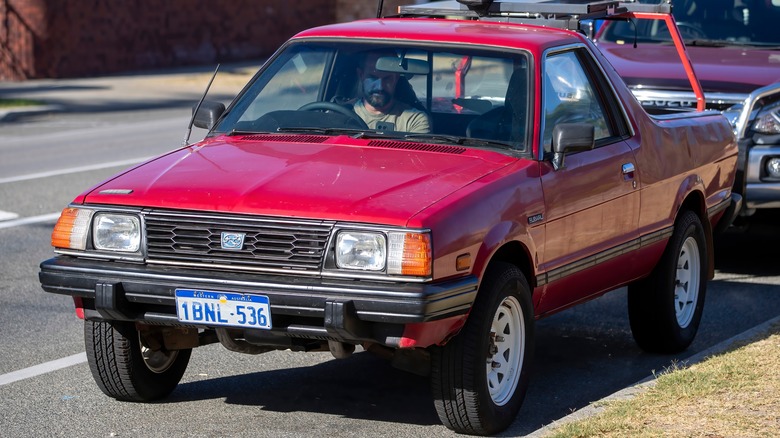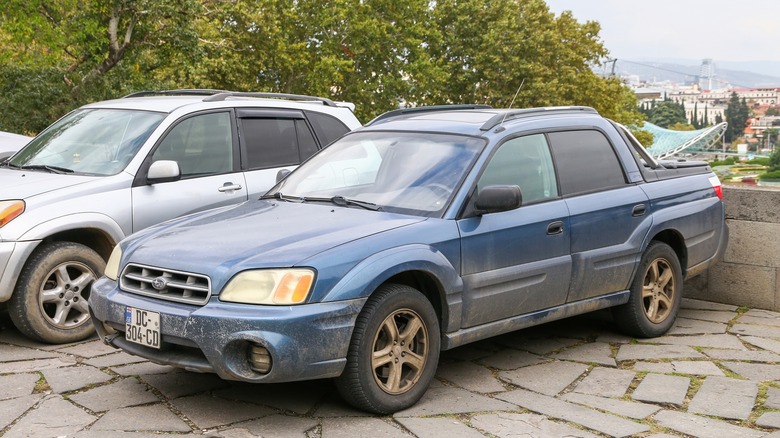13 Of The Worst-Looking Pickup Trucks Ever Designed
Some trucks are among the weirdest pickups in the world. Other pickup trucks were way ahead of their time, and others became best-sellers. Whatever the case may be, one thing is certain: The pickup is quintessentially an American icon, and it'll remain that way unless the NHTSAs new regulations come to pass. Throughout the years, we've had several good-looking pickups from different manufacturers, but there have also been some epic design fails. The beauty of a well-designed pickup lies in simplicity. These vehicles are known for having clean, sharp lines, defined proportions, and an aura of capability.
When executed right, it gives the onlooker a sense of strength, reliability, and utility. When done wrong, it makes people question what the designers were doing in the development meetings. The worst offenders with regards to design share commonalities a lot of the times, such as bizarre proportions, complexity that was avoidable, or trying to have a finger in too many pies. This list is particularly painful because trucks are inherently difficult to get wrong. The formula is straightforward: massive engine, cab, bed, wheels, done. Somehow, talented designers and engineers have managed, against all odds, to make monstrosities.
These are 13 of the worst.
Chevrolet S10
We begin our list with the 2012-2016 Chevrolet S10, with multiple generations produced. Potentially, the GM group realized that their new baby was horrendous, and facelifted the S10 massively for 2015 in America, where it was called the Colorado, and where no Colorado had been offered after 2012. Other markets continued to sell the old version through 2016 as the Chevrolet S10, which had actually debuted in Brazil in 2012.
More than anything, the 2012 S10 looked like a Chevy Spark or Beat that had been raised and given a disproportionately sized bed. It was available as both a gas-powered version, and as a diesel. Though similar to the Colorado and GMC Canyon, the S10 had an additional two inches of ground clearance when compared to the American variants. Engine choices were a gas 2.4-liter four-pot that churned out a mighty 139 horsepower, and an inline-four diesel unit that displaced 2.8 liters and produced 177 horsepower. The diesel engine models were rated for a payload of 2,663 pounds and towing capacity of 1,654 pounds unbraked, and 7,716 pounds (3,500 kilograms) braked. Pricing began at R$81,750 for the 2015 model year, which was about $26,160 at the time.
Chevrolet SSR
The best way to describe the Chevrolet SSR is to say it was the demon lovechild between the Pontiac Prowler (which we'll cover later) and the infamous PT Cruiser. The name is not a random alphabet soup, as SSR is an acronym for super sport roadster. Initially showcased at the Detroit Auto Show in 2000, the SSR was trying to be too many things at the same time. For starters, it sat low to the ground, like a sedan. It had a bed, like a pickup truck. It had a single row of seats, like a coupe. And lastly, it was a convertible.
Despite everything, Chevy released it as a model year 2003 vehicle. By the end of production in 2006, it came with a 6.0-liter V8 that was capable of pushing out 395 horsepower and 405 lb-ft of torque. It also had a standing to 60 mph time of 5.5 seconds, and topped out at 126 mph, which was fairly okay for the time, and the class of vehicle which the SSR was trying to be. Talking points on the SSR included its 15 mpg economy, 1,349-pound payload, and a 2,500-pound towing capacity. It was supposed to be a 1950s retro-inspired pickup. What it ended up being if up for you decide.
Chevrolet Avalanche (2001-2005)
The Avalanche produced from 2001 to 2005 was an eyesore, though the second-generation did improve on it greatly. Readers who remember the GM SUVs of the time will instantly recognize that it's based on the Suburban, and the second gen is even built on the same platform. A cool feature that the Avalanche did have going for it was called the midgate – a flap of sorts that would extend the bed into the passenger side of the cabin, allowing for more cargo. In terms of power, the Avalanche's base engine was a 5.3-liter V8 unit that made 289 horsepower and 325 lb-ft of torque.
Payload for this truck was rated at 1,400 pounds, and its tow rating was actually decent at 8,300 pounds. Other features on the Avalanche included adjustable pedals, radio controls on the steering wheel, and, from 2005, standard OnStar inclusion. Pricing at launch began at $31,215, but by the time the first-generation was ending production in 2006, the base MSRP for one of these had climbed to $33,910, excluding destination. With prices like that, it's unbelievable that nearly 100,000 units of the first-generation Avalanche were sold in 2003 alone, especially considering that the cheapest V8 F-150 was priced at $24,110 at the time.
Dodge Power Wagon First Series - Type D
And now, we move on to the Dodge Power Wagon – a true beast of a workhorse, but ugly as sin. The "First Series" of Type D Power Wagons was made between 1945 and 1968, with various alphanumeric codes designating the year of production: B-2, for example, indicated the 1950 model. These were available in just a one-cab configuration, namely, the two-man standard cab. No matter the model code, these trucks looked exceedingly disproportionate and bulky.
These trucks were the foundation of the post-war American economy, with more than 95,145 units sold in the U.S. by 1968. Power came from a 3.8-liter (230 cubic inch) unit that managed to push out 94 horsepower and 185 lb-ft of torque. The chassis was able to support a hauling payload of 3,000 pounds, and it had a gross vehicle weight rating of 8,700 pounds. Dodge actually ended up publishing a booklet that listed down no less than 75 different ways that buyers could use the truck as well. When launched, it would have cost buyers $1,600 for a new unit back in '46. Adjusted for inflation, it'd be $26,376 in today's money, which was actually quite a reasonable ask for the amount of truck buyers got.
Dodge 2500 V10 Club Cab
The Dodge 2500 with the hulking V10 engine was a legendary pickup truck. It's just a crying shame that it was hideous to look at, a fact that is especially true of the crew cab variant. Launched for buyers as a 1994 model, the 2500 series (and the 3500, too) came with the now-legendary Magnum V10 engine that produced no less than 300 horsepower and 450 lb-ft of torque. The truck also boasted the strongest chassis in the class, as a result of which, the 3500 was able to tow and haul 12,800 pounds and 5,290 pounds, respectively, by 2003.
In terms of cab configurations, buyers had exactly two choices, which were standard and extended cab. Pricing began with a base MSRP of $15,916 in 1994, which equates to about $34,523 in 2025 dollars – we can only dream of prices like that these days. To be clear, we're not knocking the performance of the 2500/ 3500, or the value, but the cosmetic appearance. It was disproportionate from all angles, the headlights were too small for the front fascia aesthetic, they had weird "eyebrows" on top, and the grill was massive. Though popular at the time, the rounded silhouette didn't lend it any points.
Dodge RAM 1500 Daytona
As you can see, GM and Chrysler are absolutely dominating this list — which is, for once, not a good thing. The Daytona 1500 by RAM was exactly what it sounded like: an homage to the 1969 Charger Daytona. To that end, it even had a wing at the back — which is fine; sometimes pickup trucks can also be among the fastest vehicles in the world. However, the RAM 1500 was, unfortunately, decidedly unsporty, with the aerodynamics of a brick. The fancy rear spoiler was as useful as a hollow spoon.
In terms of engines, it came with a 5.7-liter V8 unit that made 345 horsepower and 375 lb-ft of torque. This gave it a towing capacity of 11,200 pounds and the ability to haul 2,760 pounds. While a couple cab options were available, the ugliest was the one pictured above, known as the "Daytona Shorty". The proportions were all out of whack, the cab seemingly ended before it started, and the front "face" of the car was too droopy to look performant. The last nail in the coffin was the price it retailed for: $20,455 in 2005, which equals $33,669 in 2025.
Powell Sport Wagon
Introducing the Powell Sport Wagon, a quarter-ton pickup truck manufactured by a little known company based out of Compton. Produced between the years of 1954 and 1957, with an estimated 1,000 units made, we can only liken the truck to a clay model that fell off the shelf and got squished. After experimenting with many different donor models, the creators of the Sport Wagon settled upon using a 1941 Plymouth as the skeleton for their truck.
In order to keep costs low, the Sport Wagon made use of fiberglass for panels, wood for bumpers, and sliding windows. The powerplant on this truck was a slant-six that displaced a total of 3.3 liters (201 cubic inches) and produced 82 horsepower alongside an approximate 154 lb-ft of torque. With a six-foot bed and a hauling capacity of 500 pounds, the Sport Wagon was actually fairly utilitarian for its size — it's just a shame that it was let down in the looks department so much. A neat tidbit about the Sport Wagon is that it can be considered the world's first crossover SUV with the day-to-day usefulness of a sedan, but the capability of a truck. All of this came in a package that cost $1,095 in 1955, or $13,134 today –- a bargain from any angle.
Mitsubishi Triton L200
Mitsubishi decided to release this monstrosity, called the L200, in 2005. While the front looks like the Pajero from that generation, the side profile is more ute (that's what the Australians call pickup trucks) than anything. The amusing bit is that the original Triton L200 that ran for a decade from 1995 through 2005 was actually a rather good-looking vehicle.
For some reason, Mitsubishi's design team decided to completely upend that design and introduce the wavy, flowing Triton L200 of 2005. The company would then proceed to run with this design for the next decade, only facelifting the truck in 2015. Back in 2005, the all-new Triton L200 debuted with a 2.5-liter four-banger power unit that produced 116 horsepower and 182 lb-ft of torque. This gave it a reasonable 5,953 pound (2,70 kilogram) towing capacity and a 2,200 pound (1,000 kilogram) hauling rating. There were three cabs offered: a double cab, a crew cab, and the cartoonish-looking single cab, pictured above. In terms of pricing, the American version launched with a base MSRP of $23,680 in 2005, which, accounting for inflation, equals $38,977 today.
Ford Explorer Sport Trac Adrenalin
The pickup version of the 2008 Ford Explorer, which was named the "Sport Trac Adrenalin", was not exactly eye-candy. It was available from 2008 to 2010, and actually had fairly respectable performance figures. Standing to 60 mph came about in 9.5 seconds, and the speedo topped out at 120 mph, alongside a maximum tow capacity of 5,320 pounds, and a payload of 1,450 pounds. This performance was courtesy the 4.0-liter V6 engine that the STA shipped with, producing 210 horsepower and 254 lb-ft. The economy on the Explorer STA was 14 mpg in the city and 20 mpg on the highway, which was impressive for a vehicle of this size. Other noteworthy standard features on this truck included fog lights, a leather steering wheel, power windows in the second row, a bedliner, and lots more airbags.
In terms of dimensions, the Explorer Sport Trac Adrenalin had 39.8 inches of front headroom, 36.9 inches of rear legroom, and 37.5 cubic feet of storage space. Cab choices on this model were limited to a four-door two-row cab, and that was it. Pricing began at $30,015 in 2008, though 2010 models currently change hands for about $10,000, per J.D. Power. Adjusting the 2008 MSRP for inflation works out to about $44,814 today or roughly what buyers pay for an entry-level F-150 XL these days.
1940s Ford 21c Pickup
Despite the aesthetics of that one balding uncle with the small moustache that everyone has, classic Ford pickups are very collectable cars. Running from 1940 to 1947, the Ford was quite a long-running model for the time. Wide, exaggerated fenders ate into the sides of the long bonnet, which itself led up to an almost-vertical windshield that was attached to a convex roof.
This roof went flat down towards the comically large bed of the truck, which was about 6.5 feet in length, and the rear windscreen was also too small to be useful. On those front fenders were mounted circular headlights that had a lampshade attached, which kind of looked like eyelids. And right at the front of the car was the most bizarre-looking, angular radiator grill that anyone could have ever dreamed up. As far as engines go, it came with several different engine choices, including two V8s, a six-cylinder, and a four-pot. Reported performance output figures for these engines vary a lot, so we haven't listed them here. However, we can confirm through a reputable source that models with the 21A V8 engine made about 90 horsepower and had a top speed of about 65 mph.
Tesla Cybertruck
While trailblazing is an admirable trait many companies are losing, it's often a hit or miss in terms of design. In the case of the Cybertruck, it's a very big miss. The sharp, angular lines on the Cybertruck make it look like a render from a not-very-powerful computer, and the three-panel front fascia looks like a graphic from a PlayStation 2 game. The long, sloping back that feeds into the bed of the truck is also quite impractical. It would make loading any cargo over the side walls an unnecessary hassle, especially since the walls are sloping and smooth.
With respect to power, the Cybertruck actually has plenty, with the entry-level long-range trim coming with a single motor, producing a total of 315 horsepower and 364 lb-ft of torque. Adding to all this is the price: the entry model long-range Cybertruck has a base MSRP of $62,490, tough most users tend to upgrade. This is in addition to a destination fee of $1,995. Furthermore, several Cybertruck owners report issues with the build quality of the truck, citing problems like buggy software, self-driving problems, and touchscreen freezes– none of which you want to see in a vehicle that costs a minimum of $62,490.
Subaru BRAT
Have you ever seen a pickup truck where the bed of the vehicle is as long as the bonnet? If you haven't, it's probably because you've not been exposed to the sight of the Subaru BRAT, a truck produced by the second-most famous blue oval company in America. Made between 1978 and 1987 in the States, the BRAT was one of the most comical-looking vehicles that ever hit the market, like a brick that had both sides chiseled off.
This was not helped along by the fact that the BRAT was only ever offered in standard cab, two-row configuration – because a double-cab, or even a crew cab would have gone a long way to improve the outline of the vehicle. The debut engine option on the BRAT was a 1.6-liter inline-four that managed to pump out all of 67 horsepower and 81 lb-ft of torque and was shipped with a four-speed manual gearbox. Additionally, BRAT is actually short for Bi-Drive Recreational All-Terrain Transporter. However, for just light work, it got the job done just fine — it's just that the first of two major problems with the BRAT was that it was an eyesore, and the second was that it was small. The price was a selling point though: $4,209 back in 1978. When converted to adjust for inflation, the BRAT was worth $20,752 in today's money.
Subaru Baja
The last of the worst-looking pickup trucks ever designed on our list also comes from Subaru, in the form of the Baja ute. In many ways, the Baja was the successor to the Subaru BRAT that we just introduced (or re-introduced) you to above. Though based on the Subaru Outback that was being produced at the same time, the Baja was much quirkier, in that a lot of its design choices simply didn't make sense. Why are some parts extremely jagged and angular, while others are flowing into curves? With all the other models that we've listed, a single, common design language was followed.
On the other hand, the Baja looks like the output of a group project where no one could see eye to eye. It is trying to be a wagon, ute, and sedan all at the same time, while being vastly underpowered for what it's trying to be. Additionally, the utility on the Baja was also questionable, with the bed being too small to be of any use, at just 3.5 feet long. The engine was nothing to write home about either, being a 2.5-liter flat-four that made a paltry 165 horsepower and 166 lb-ft of torque in a car that weighed 3,665 pounds. The price was an eye-watering $23,295 in 2006, or $37,145 today, presumably to cover the ludicrous amount of R&D that must have gone into this thing.
